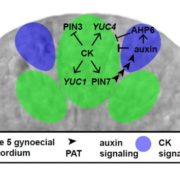
Cytokinin-auxin crosstalk in the gynoecial primordium ensures correct domain patterning
The phytohormones auxin and cytokinin (CK) work either antagonistically or synergistically to regulate several critical development pathways such as meristem formation and maintenance. Müller et al. show similar crosstalk between auxin and CK in controlling early gynoecium patterning. Using TCSn::GFP…
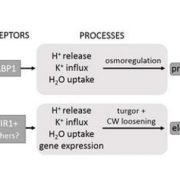
Protoplast swelling and hypocotyl growth depend on different auxin signaling pathways ($)
Auxin was the first phytohormone to be discovered and it has been found to have a role in nearly every aspect of plant growth and development. Auxin biology is multi-layered, as you will see in the following summaries. Auxin is regulated at the level of biosynthesis, different receptors, and domain segregation.…

Recognizing Plant Cell first authors: Jamie Waese
Jamie Waese, featured first author of ePlant: Visualizing and Exploring Multiple Levels of Data for Hypothesis Generation in Plant Biology
Current Position: Senior Manager, Data Visualization Lab, Department of Enterprise Advanced Analytics, TD Bank, Toronto, Canada.
Education: PhD (2017) in Data…

Recognizing Plant Cell first authors: James K. McCarthy
James K. McCarthy, featured first author of Nitrate Reductase Knockout Uncouples Nitrate Transport from Nitrate Assimilation and Drives Repartitioning of Carbon Flux in a Model Pennate Diatom
Current Position: Research Fellow, J. Craig Venter Institute, La Jolla, CA.
Education: Ph. D. Microbiology…
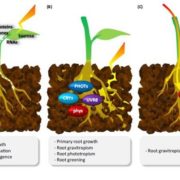
Review: Multiple routes of light signaling during root photomorphogenesis
Light response research in plants has traditionally focused on the shoot, but recent studies have revealed that roots are also light responsive. Lee et al. address the why and how of root photomorphogenesis. They review three ways that light is perceived in roots: via mobile signals from the shoot, direct…

Review: Transcriptional control of photosynthetic capacity - conservation and divergence from Arabidopsis to rice
About 3000 genes are required for a plant to carry out photosynthesis. Wang et al. review the transcriptional control of these photosynthetic genes, drawing on transcriptomic and evolutionary studies to make comparisons between Arabidopsis and grasses. Photosynthesis of course starts with light, and…
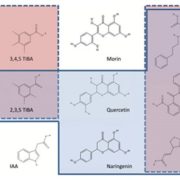
Review: Naphthylphthalamic acid and the mechanism of polar auxin transport ($)
Teale and Palme give an overview of what the last 60 years of using synthetic chemicals inhibitors of polar auxin transport has really taught us. Key among inhibitors is Naphthylphthalamic acid (NPA) that interferes with polar auxin transport and can mimic PIN gene mutant phenotypes. These inhibitors…
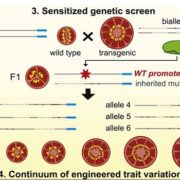
Engineering quantitative trait variation for crop improvement by genome editing ($)
Variation is the engine of evolution, and plant breeders and geneticists have long relied on induced variation to create a population from which to select. Rodríguez-Leal et al. used CRISPR/Cas9 mutagenesis to selectively introduce variability into the promoter regions of three genes involved in tomato…
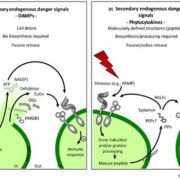
Review: Sensing danger – key to activating plant immunity
The first step in defending yourself is recognizing that you need to defend yourself. Gust et al. review the mechanisms through which plants sense danger, drawing parallels to similar mechanisms in animals. They define three categories of danger signals. Exogenous signals are “non-self” signals,…

